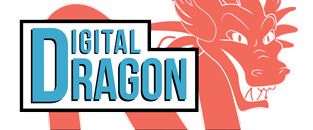Promoting Positive Interactions for Children
In these trying and frustrating times, it is easy to slump into counterproductive routines. It is too simple and convenient to sink into the bottomless content channels that eat away at our time throughout the day and into our nights. This month, let’s noodle on a quote from our 44th president, Barack Obama. He states, “Don’t just buy a new video game, make one. Don’t just download an app, help design it. Don’t just play on your phone, program it.” This and many other quotes like it drive the “Don’t just consume tech. Create it!” mentality found at Digital Dragon since it’s inception.
So what should we take into consideration to ensure a balance between entertainment and creating spaces for learning moments? There are some signals we can look for when engaging with a platform (often integrated with technology).
Does the activity promote positive social interaction? What type of interaction is happening? Are the relationships shallow or do they have the capacity to grow into something deep and meaningful? Can messages be easily misconstrued, and is there a chance for pigeonholing? From Zoom and other conferencing apps, to Minecraft Servers, and social media, there are plenty of options all with their pros / cons.
Is there active engagement? We all know how consuming technology can be. How are we providing a variety of experiences to promote exploration and branch interests? With more variation in play, there’s more chance of alignment with other content areas which at first glance are “boring.”
The inherent joy of learning is platform agnostic. There have been countless TED talks / articles / posts (even from me) on how this works.
Iteration and failing forward is what drives the graduate department I serve under and is at the heart of innovation. Good games / educational activities allow us to fail forward and achieve mastery at our own pace, follow our own path, and don’t set us back so much that we give up.
One of my alma mater’s motto states “my heart is in the work.” What we choose to consume (and create) should be meaningful. What can be transferred from a show or game? Do we allow time to reflect and make personal what we’ve just experienced?
TLDR; There has been a natural need for relevant experiences since the dawn of time. Places like Digital Dragon were created to address that need. When bombarded with more content than ever in the history of the world, it’s important to know and name what the technology is designed to do and what it promotes. In such a critical time, please consider the aforementioned signals when deciding how to best serve our learners and community at large.
John Balash was instrumental in Digital Dragon’s launch in 2013 as its first Curriculum Director and is now back in the fold as a consultant on all the latest and greatest in tech education.This is John’s latest contribution to a monthly blog series we’ve launched, Tech News from the Frontier. John is the Director of Educational Engagement at Carnegie Mellon University’s Entertainment Technology Center. John has worked on educationally focused initiatives with clients ranging from D.A.R.P.A. to Disney. Working from both sides of the desk, you can find John in classrooms and conferences around the world exploring new uses for technologies in learning environments.

